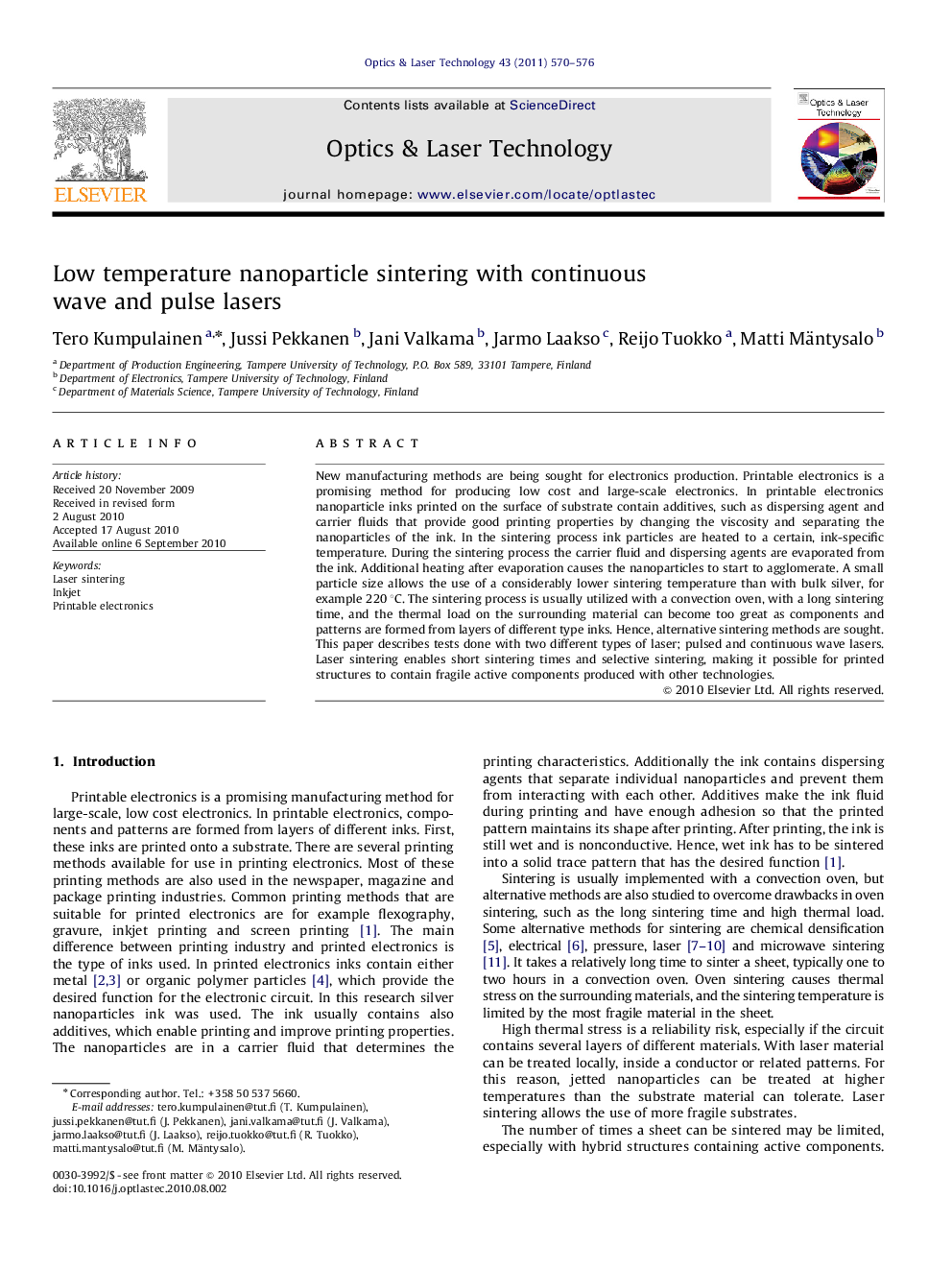| Article ID | Journal | Published Year | Pages | File Type |
|---|---|---|---|---|
| 733906 | Optics & Laser Technology | 2011 | 7 Pages |
New manufacturing methods are being sought for electronics production. Printable electronics is a promising method for producing low cost and large-scale electronics. In printable electronics nanoparticle inks printed on the surface of substrate contain additives, such as dispersing agent and carrier fluids that provide good printing properties by changing the viscosity and separating the nanoparticles of the ink. In the sintering process ink particles are heated to a certain, ink-specific temperature. During the sintering process the carrier fluid and dispersing agents are evaporated from the ink. Additional heating after evaporation causes the nanoparticles to start to agglomerate. A small particle size allows the use of a considerably lower sintering temperature than with bulk silver, for example 220 °C. The sintering process is usually utilized with a convection oven, with a long sintering time, and the thermal load on the surrounding material can become too great as components and patterns are formed from layers of different type inks. Hence, alternative sintering methods are sought. This paper describes tests done with two different types of laser; pulsed and continuous wave lasers. Laser sintering enables short sintering times and selective sintering, making it possible for printed structures to contain fragile active components produced with other technologies.
